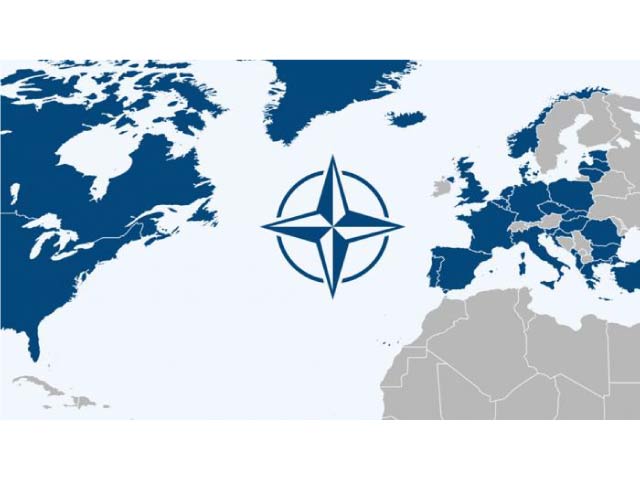Its main missions are to guarantee peace in Europe, promote cooperation between member states and preserve their freedom. The genesis of its creation is based on a desire to protect its member states from the potential dangers emanating from the Soviet Union. Thus, on the 4th of April in 1949, in Washington, twelve representatives of the following nations: The United States, Canada, Belgium, Denmark, France, Iceland, Italy, Luxembourg, Norway, the Netherlands, Portugal and the United Kingdom, met to sign the founding treaty of the alliance.
The step to follow is clear: democracy is at the heart of the process, along with the rule of law and the peaceful management of conflicts.
The principle of “collective defense” is one of the founding pillars of this charter. Attacking one of the member countries amounts to attacking all the allies of the cartel. There is no joint ownership between countries and there is infallible cooperation between Europe and North American countries. The number of member states has evolved considerably since its creation and today, 29 countries make up this structure. For a country to be accepted into the alliance, it is essential that all member nations validate the candidate's candidacy and the main selection criterion is based on sharing the common values of the organization.
As mentioned above, the alliance was created in response to the Cold War which lasted until 1989. The end of this conflict enabled the organization to turn to other objectives, still in this quest for security, given the instabilities of many homes on the planet. Since the beginning of the 90s, many partnerships have been linked with non-member states and in particular with former Cold War opponents from the former Eastern bloc. The desire for openness is real and present. A multitude of collaborations with countries or with organizations have been linked and this development has been continuous for a while.
Today, there are nearly forty partner nations including Australia, Japan, the Republic of Korea, New Zealand, Pakistan, Iraq, Afghanistan and Mongolia to name a few of them. In terms of cooperation, the United Nations (UN) and the European Union, should be mentioned among the best known and above all, the most prestigious of them.
The management of disagreements, despite the end of Soviet tensions, is still at the center of NATO's concerns, which has contributed in particular to establishing a climate of a lasting peace in the Balkans with life-saving military interventions in Bosnia Herzegovina and Kosovo. But also, in Afghanistan, following the attacks of September 11th in 2001, thanks to the deployment of armed forces which made it possible to maintain the country in a climate of relative appeasement. The role of the organization is essential today. There are many situations in which it has intervened and for which it has greatly contributed to maintain a democratic climate.
However, the threats that hover are always more numerous. The news confirms this to us, since Russia, which illegally annexed Crimea in March 2014, decided today to invade Ukraine to extend its domination, deprive this country of its independence and prevent it from joining the NATO. The concerns of the organization are multiple. The latest also concern the management of cybercrime, the fight against terrorist acts, humanitarian actions or interventions in favor of environmental protection. The complexity of managing these different situations forces the organization to cooperate with its many partners and to extend its connections regularly. The decisions taken by the structure are based on the principle of consensus. Thus, there is no voting procedure between member countries.
In the event of disputes, discussions continue until common ground is found. It is the collective that takes precedence here, to the detriment of the absolute majority. NATO does not have its own military forces. In a conflict situation, soldiers from member countries of the alliance intervene.
Today, nearly 40,000 soldiers can intervene for the structure if its interests are threatened. Each member state is responsible for financing its army when deployment is necessary. NATO has a political headquarter and a military committee (the highest military authority of the administration) which aims to ensure the defense of the "NATO zone" through the implementation of initiatives related to military maneuvers.
To guarantee the proper functioning of these two entities, based in Haren in Belgium, all the member states donate part of their national defense budget to the structure. This collective financial compensation, amounting to 2.5 billion euros, actively participates in financing the structure's programs, the logistics of war operations, the setting up of command, communication and control posts.
In conclusion, respect for democracy and the maintenance of peace constitute the DNA of the organization. The principle of solidarity known as “collective defence” constitutes a serious deterrent for any country wishing to attack a member of the “NATO zone”. Collective funding allows the organization to have significant financial resources and intervene quickly with substantial resources, both logistically and human, in the situation of a conflict. Partnerships are becoming increasingly stronger on a global scale and this gives the structure an ever stronger legitimacy. However, its interventions in Kosovo and Afghanistan in particular have already shown the need for its existence.
Bibliography
- NATO: North Atlantic Treaty Organization by Claude DELMAS.
- The Organization of the North Atlantic: organization, operation and perspectives by Gilles ROUBY.
The step to follow is clear: democracy is at the heart of the process, along with the rule of law and the peaceful management of conflicts.
I - The strength of the collective above all
The principle of “collective defense” is one of the founding pillars of this charter. Attacking one of the member countries amounts to attacking all the allies of the cartel. There is no joint ownership between countries and there is infallible cooperation between Europe and North American countries. The number of member states has evolved considerably since its creation and today, 29 countries make up this structure. For a country to be accepted into the alliance, it is essential that all member nations validate the candidate's candidacy and the main selection criterion is based on sharing the common values of the organization.
As mentioned above, the alliance was created in response to the Cold War which lasted until 1989. The end of this conflict enabled the organization to turn to other objectives, still in this quest for security, given the instabilities of many homes on the planet. Since the beginning of the 90s, many partnerships have been linked with non-member states and in particular with former Cold War opponents from the former Eastern bloc. The desire for openness is real and present. A multitude of collaborations with countries or with organizations have been linked and this development has been continuous for a while.
Today, there are nearly forty partner nations including Australia, Japan, the Republic of Korea, New Zealand, Pakistan, Iraq, Afghanistan and Mongolia to name a few of them. In terms of cooperation, the United Nations (UN) and the European Union, should be mentioned among the best known and above all, the most prestigious of them.
II - A climate of insecurity that remains
The management of disagreements, despite the end of Soviet tensions, is still at the center of NATO's concerns, which has contributed in particular to establishing a climate of a lasting peace in the Balkans with life-saving military interventions in Bosnia Herzegovina and Kosovo. But also, in Afghanistan, following the attacks of September 11th in 2001, thanks to the deployment of armed forces which made it possible to maintain the country in a climate of relative appeasement. The role of the organization is essential today. There are many situations in which it has intervened and for which it has greatly contributed to maintain a democratic climate.
However, the threats that hover are always more numerous. The news confirms this to us, since Russia, which illegally annexed Crimea in March 2014, decided today to invade Ukraine to extend its domination, deprive this country of its independence and prevent it from joining the NATO. The concerns of the organization are multiple. The latest also concern the management of cybercrime, the fight against terrorist acts, humanitarian actions or interventions in favor of environmental protection. The complexity of managing these different situations forces the organization to cooperate with its many partners and to extend its connections regularly. The decisions taken by the structure are based on the principle of consensus. Thus, there is no voting procedure between member countries.
In the event of disputes, discussions continue until common ground is found. It is the collective that takes precedence here, to the detriment of the absolute majority. NATO does not have its own military forces. In a conflict situation, soldiers from member countries of the alliance intervene.
Today, nearly 40,000 soldiers can intervene for the structure if its interests are threatened. Each member state is responsible for financing its army when deployment is necessary. NATO has a political headquarter and a military committee (the highest military authority of the administration) which aims to ensure the defense of the "NATO zone" through the implementation of initiatives related to military maneuvers.
To guarantee the proper functioning of these two entities, based in Haren in Belgium, all the member states donate part of their national defense budget to the structure. This collective financial compensation, amounting to 2.5 billion euros, actively participates in financing the structure's programs, the logistics of war operations, the setting up of command, communication and control posts.
III - Conclusion
In conclusion, respect for democracy and the maintenance of peace constitute the DNA of the organization. The principle of solidarity known as “collective defence” constitutes a serious deterrent for any country wishing to attack a member of the “NATO zone”. Collective funding allows the organization to have significant financial resources and intervene quickly with substantial resources, both logistically and human, in the situation of a conflict. Partnerships are becoming increasingly stronger on a global scale and this gives the structure an ever stronger legitimacy. However, its interventions in Kosovo and Afghanistan in particular have already shown the need for its existence.
Bibliography
- NATO: North Atlantic Treaty Organization by Claude DELMAS.
- The Organization of the North Atlantic: organization, operation and perspectives by Gilles ROUBY.












